|
When the ice retreated in Glacier Bay, it left behind a scoured landscape of rocks and mud. In time, plants returned to the seemingly sterile land. Eventually, animals returned to the land and waters within the bay. Today, a full checklist of creatures call Glacier Bay home for at least part of the year, and the number could grow as more creatures find their way to this evolving landscape. As you explore Bartlett Cove or as you cruise up the bay, keep your eye out for some of these more frequently seen members of the community. By SeaWhen spotting wildlife on the water, use just your eyes first. Watch for any movement or unusual shapes on the surface, then use binoculars to take a closer look. Patience and determination are often rewarded and binoculars help magnify the experience. 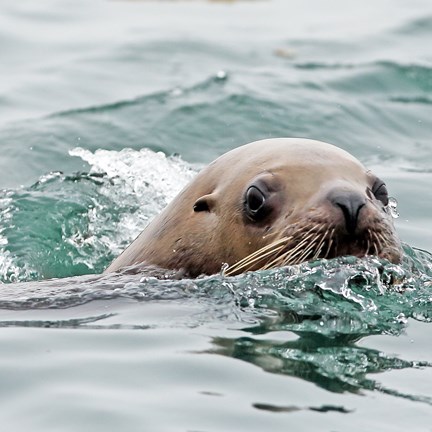
Steller Sea LionEumetopias jubatus Like all members of the eared seal family Otariidae, Steller sea lions can support themselves on their flippers while ashore, and their rear flippers pivot, allowing them to get around with surprising speed. In the water they become fluid, executing a seemingly endless series of underwater flips, turns, and rolls. Mature males can weigh almost 2,000 pounds, though females average only 600 pounds. During mating season, large bulls compete at established rookery sites on Glacier Bay's outer coast to collect harems of females. Unsuccessful and immature males often congregate at haul-out areas like South Marble Island. Though the number of sea lions is growing in Glacier Bay, the population in Western Alaska has decreased by 80 percent since the late-1970s leading to that portion of the population's current listing as endangered. 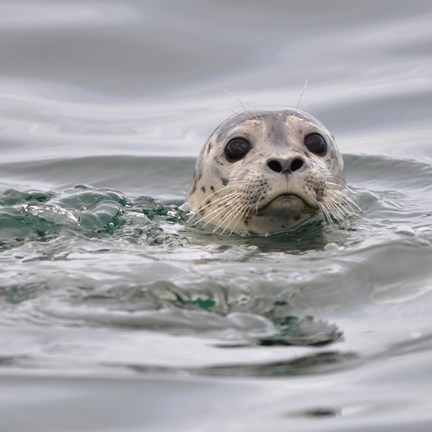
Harbor SealPhoca vitulina richardsi Harbor seals have a dappled gray coat that can be highly variable between individuals. A thick layer of fat allows them to keep warm in otherwise chilling conditions. Unlike the sea lion, harbor seals have no external earflap and when out of the water, cannot support themselves on their flippers. On ice floes, they resemble plump sausages that move around by scooting on their ample bellies. In the water, they display admirable grace as they hunt for fish. Up to 1,700 seals converge in Johns Hopkins Inlet each summer for pupping and mating. Ongoing research in the park indicates that the population in the inlet has declined 75 percent in the past decade. 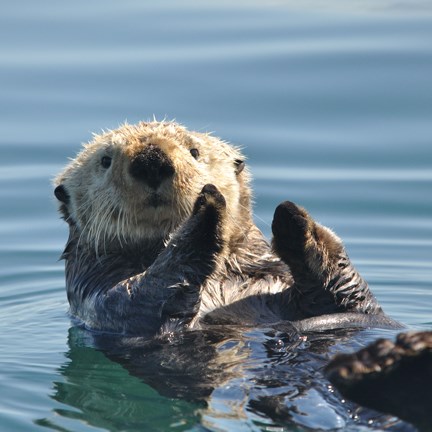
Sea OtterEnhydra lutris The Glacier Bay sea otter population has rebounded from zero to almost 9,000 in the last 20 years. Voracious eaters of shellfish like crabs and clams, they exert a strong influence on their environment and scientists anticipate dramatic changes will take place in the underwater world of Glacier Bay. Sea otters perform many of their daily tasks such as eating, bathing, and sleeping while floating on their backs. Lacking a thick layer of blubber, otters instead have the densest fur of any mammal with up to one million hairs per square inch. Generally dark brown, their faces get whiter as they age. 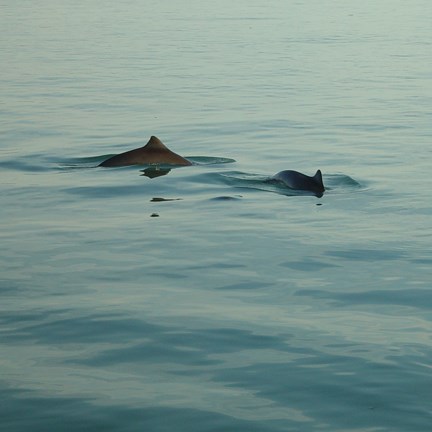
Harbor PorpoisePhocoena phocoena At five feet long and about 120 pounds, harbor porpoise are the smallest cetaceans in Alaska waters. Often seen in groups of two to ten throughout the bay, they announce themselves by offering a brief glimpse of their small triangular dorsal fin cutting slowly through the water's surface when they come up to catch a breath. Harbor porpoise are generally dark gray with a slightly pointed face. They do not ride bow waves, like their relative the Dall's porpoise. Dall's porpoise are larger (6.4 feet and 300 pounds) and resemble small orcas in their black and white coloration. Though Dall's porpoise can be seen in the bay, they are more often seen near the entrance and in Icy Strait. 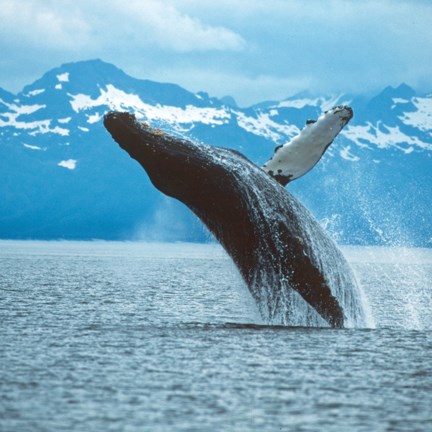
Humpback WhaleMegaptera novaeangliae Seeing a humpback whale in Glacier Bay is an unforgettable experience for many visitors. The true giants of Glacier Bay's waters, these endangered animals are 40-50 feet (12-16 m) long and weigh over 35 tons (32,000 kg). The humpback is a baleen whale that migrates seasonally. Most Glacier Bay whales swim to Hawaii each winter to mate and give birth, a 2,500-mile (4,000 km) journey that takes about a month each way. These whales do not eat while they are wintering in the tropics. All spring, summer, and fall in Alaska, they gorge themselves on high-calorie small schooling fish such as capelin and herring. 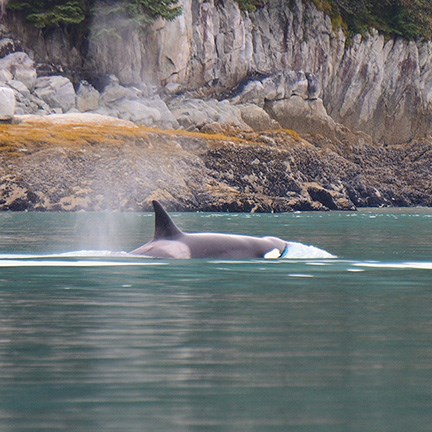
NPS Photo / T. Lewis Killer WhaleOrcinus orca Colloquially called the "orca", scientists prefer the common name, "killer whale" when referring to this impressive whale species. They are the member of the dolphin family, and may reach lengths of 23 to 26 feet and weigh four to eight tons. There are three unique ecotypes of killer whales, similar to a subspecies, that may visit Glacier Bay. The resident popluation of killer whales generally stay local to their home area, and are primarily fish eaters. The transient population of killer whales travel and migrate further distances, and primarily eat marine mammal prey. Offshore killer whales' rarely travel into Glacier Bay, as they generally remain in the open ocean. By LandThe best way to find wildlife is to learn about their habits. Ask a ranger what habitats support wildlife in Glacier Bay. On land, scan over suitable habitat with your binoculars, watching for movement or obvious silhouettes. 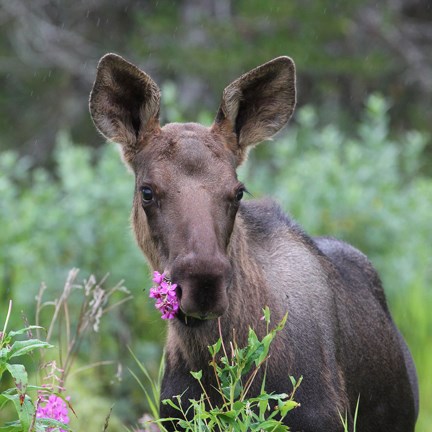
MooseAlces alces The largest member of the deer family is a recent newcomer to Glacier Bay. The first moose was spotted here in the late 1960s. Despite their tremendous size (bulls can weigh 1,600 pounds and cows 1,300 pounds), they can appear and disappear in thick brush with surprising stealth. Moose are usually solitary, except for cows with calves and during the fall rutting season. Cows give birth in the spring to one or two small, reddish calves. A calf will stay with its mother for two years before the cow drives it off as she prepares to have more young. Their diet includes willow leaves, grasses, herbs, and aquatic vegetation. Only bulls grow antlers. 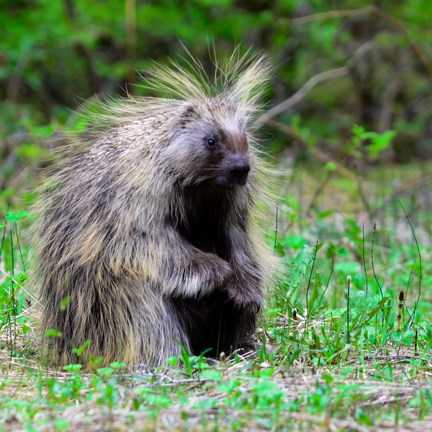
PorcupineErethizon dorsatum You may find this prickly member of the community high up in a cottonwood tree nibbling tasty tender leaves. Except for their footpads and nose, porcupines are completely covered with yellowish fur and quills, which are actually modified hairs tipped with barbs. A threatened porcupine will turn its back-end toward the source of trouble to present an intimidating display of quills that firmly suggests the would-be predator reconsider its dinner plans. This large rodent (second largest in North America behind the beaver) performs a broad repertoire of grunts, whimpers, and screams. Listen for them in the evenings "talking" to no one in particular. 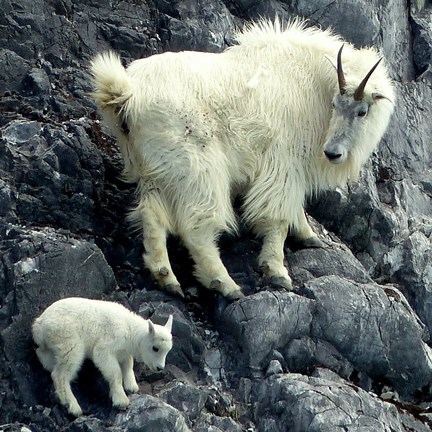
Mountain GoatsOreamnos americanus Mountain goats have thick white coats of hollow hairs that help to keep them warm in extreme weather. Goats may have been among the first land animals to recolonize Glacier Bay after the ice retreated, coming over the mountains from Lynn Canal to the east. They are at home on the steep rocky cliffs in the mid-to-upper bay. The special shape and design of their hooves allows them to leap nimbly from ledge to ledge in search of grasses, herbs, and low-growing shrubs. Seen at a distance, they can be mistaken for Dall sheep, which are found in interior Alaska, rather than Glacier Bay. 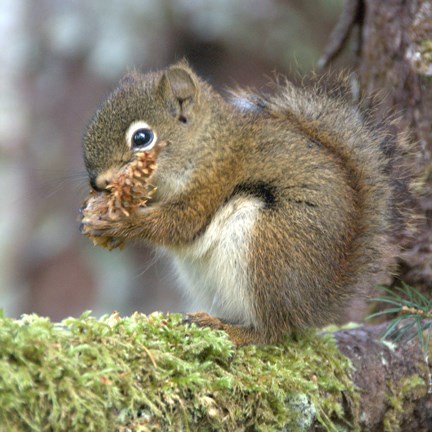
Red SquirrelTamiasciurus hudsonicus If you see a little red flash zipping up a tree trunk or leaping nimbly among the branches, chances are it is a red squirrel. These agile rodents spend their summer preparing for winter by collecting and storing green spruce cones in their middens, mounds of cones at the base of a tree. A red squirrel can harvest 12,000 to 16,000 spruce cones a year. Other favorite foods include mushrooms and seeds. Like forest alarms, they chatter unrelentingly when a threat—like you—is near. 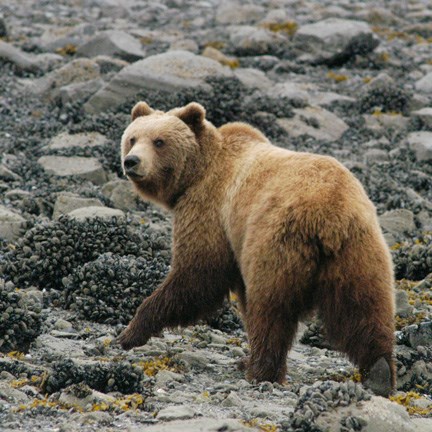
Glacier Bay BearsUrsus arctos & Ursus americanus Glacier Bay National Park is home to brown bears, Ursus arctos, and black bears, Ursus americanus. Black bears are primarily creatures of woodlands and are found among the forested areas of the lower bay, including Bartlett Cove. In contrast, park biologists have recently discovered that brown bears inhabit virtually every part of Glacier Bay, from the barren glaciated areas to lush old-growth forests. Although it is not always a given that a visitor will see a bear in Glacier Bay, there are very few beaches on the bay’s 1,100 miles of coastline where sign of bear activity is not visible. Bears thrive in a variety of habitats, and their strategy for survival is to constantly explore their surroundings for new food sources. Most of the islands in the bay are visited routinely by bears, and one can expect to find them almost anywhere. They are always a thrilling sight when spotted on their mostly solitary rambles along Glacier Bay’s beaches.
|
Last updated: February 15, 2024
